- stsqa
- November 25, 2025
- 0 Comments
How Much Do Payroll Services Cost? 2025 Pricing Guide
How Much Do Payroll Services Cost? It’s a critical question, especially when payroll errors, regulatory changes, and multi-location teams can quickly become expensive problems. Compliance pressure grows every year, making manual payroll processes too risky to rely on. That’s why understanding payroll costs is the first step in choosing a reliable, efficient solution.
On average, payroll services cost between QAR 660–1,100 per month for small teams, with higher fees for larger or global operations depending on complexity and pay frequency.
Our advanced DOTS HR & Payroll Software combines automation, WPS compliance, self-service access, and real-time insights into one integrated platform. As a result, Qatar businesses gain a faster, more accurate, and cost-efficient payroll system free from hidden costs and manual workloads.
How Much Do Payroll Services Actually Cost?
Payroll services usually include a monthly base fee plus a per-employee charge. On average, small businesses spend QAR 620–1,165 per month, depending on staff size and payroll needs. Basic plans can start at around QAR 142 per month, while advanced options, such as global payroll or PEO services, can cost over QAR 364 per employee each month.
Your total cost depends on how often you run payroll, how many employees you have, and the level of compliance or HR support required. Extra fees for setup, year-end tax filings, multi-state payroll, or added HR tools may also apply.
Understanding these cost layers helps you choose a payroll solution that fits your budget and scales with your business.
What Payroll Services Really Include?
Payroll services handle far more than cutting paychecks. They consolidate compliance, automation, reporting, and payments into one streamlined system. Here’s what a complete, modern payroll service typically includes:
1. Payroll Calculation & Wage Processing
Modern payroll services calculate hourly wages, salaries, overtime, bonuses, commissions, shift differentials, and industry-specific rules. They automate every pay run, eliminate manual spreadsheets, and drastically reduce costly processing errors, especially for multi-location, multi-shift, or global teams.
2. Tax Withholding, Filing & Compliance Management
Providers handle federal, state, local, and international payroll taxes, including withholding, quarterly filings, year-end returns, and cross-border compliance. This includes automated updates for new tax laws, avoiding IRS penalties, miscalculations, late deposits, and errors common in manual or in-house payroll systems.
3. Direct Deposit, Global Payments & Check Delivery
Payroll services distribute employee payments through secure direct deposit, international transfers, contractor payouts, or printed checks. They support multiple currencies, global banking regulations, and automatic verification processes. It helps ensure employees, whether they are local or remote, are paid accurately and on time, every cycle.
4. Employee Self-Service Portals (ESS)
ESS portals let employees download pay stubs, update tax forms, manage direct deposit, view PTO balances, track hours, and access year-end forms. This reduces HR workload, increases transparency, and empowers employees, especially useful for distributed, remote, or shift-based workplaces.
Global Payroll Service Pricing Models Explained
Global payroll pricing varies widely depending on employee location, tax complexity, and service model. Most providers charge a mix of base fees, per-employee rates, and location-specific compliance costs.
| Pricing Model | How It Works | Typical Cost Range (QAR) | Best For |
| Per Employee Per Month (PEPM) | You pay a flat monthly fee for each employee or contractor. Costs rise with headcount and country complexity. | QAR 55–164 (U.S.)QAR 128–910 (Global) | Global companies, distributed teams, cross-border workforce |
| Per Payroll Run | Charged each time payroll is processed. More expensive for weekly/biweekly payrolls. | QAR 73–291 per run + QAR 15–44 per employee | Companies running payroll monthly/biweekly |
| Base Fee + PEPM Hybrid | A monthly base fee plus a per-employee charge. Most common for SMB payroll providers. | QAR 182–364 base + QAR 22–55 PEPM | Small and midsize businesses |
| Fixed Monthly Pricing | One bundled monthly fee regardless of pay runs or team size. Predictable but limited. | QAR 728–3,640+ per month | Very small companies with simple payroll needs |
| PEO (Co-Employment Model) | Provider becomes employer of record for payroll, taxes, and benefits. More comprehensive and expensive. | QAR 288–728+ PEPM | Companies wanting outsourced HR + payroll + compliance |
| Employer of Record (EOR) Global Payroll | Provider hires international employees for you, managing payroll, compliance, and onboarding in each country. | QAR 910–2,548 per employee monthly | Hiring abroad without establishing local entities |
| Contractor-Only Payroll | Pay international contractors only. No entity required. | QAR 69–200 per contractor monthly | Global freelancers/contractor-heavy teams |
| Usage-Based (Per Transaction) | Costs determined by number of payroll actions: deposits, filings, adjustments, W-2/1099 creation. | QAR 7–55 per transaction + filing fees | Companies with very low payroll frequency |
Additional Costs to Expect with Global Payroll Services
Global payroll services often involve more than base fees and per-employee charges. International hiring introduces extra costs for compliance, currency conversion, tax filings, onboarding, data security, and country-specific employer obligations that vary widely across different regions.
1. Statutory & Compliance Contributions
Many countries require employers to pay social taxes, pensions, health insurance, and statutory benefits. These mandatory costs can add 10%–45% on top of employee salaries, depending on the country.
2. Country Setup & Entity Fees
When expanding into a new country, you may need to pay setup fees or create a legal entity. Traditional payroll providers often charge QAR 1,820–10,920 per country, while EORs eliminate the need for entity setup.
3. FX & International Payment Fees
Paying employees in local currencies can generate conversion fees, wire charges, and bank costs. Exchange rate changes may also increase monthly payroll expenses for multi-currency teams.
4. Year-End Tax Reporting Fees
Year-end forms like T4s, P60s, A1 certificates, or 1099s often come with extra fees. Providers typically charge QAR 18–91 per form or offer annual compliance packages.
5. Labor Law Updates & Advisory Costs
Global payroll requires constant updates to wage laws, overtime rules, and tax changes. Some providers charge additional fees for compliance monitoring or access to HR and legal experts.
6. Global Benefits Administration Fees
Benefits such as private healthcare, pensions, insurance plans, or mandatory 13th-month pay increase overall payroll costs. Some providers or brokers may charge extra administrative fees to manage these benefits.
7. Onboarding & Offboarding Charges
Generating contracts, onboarding new employees, or handling terminations can come with per-employee fees. This is more common in regions with strict employment regulations like Europe or LATAM.
8. Corrections, Off-Cycle & Amendment Fees
Bonus runs, late payments, payroll corrections, or off-cycle payments may incur additional charges, especially with providers that use usage-based pricing.
What Factors Influence Payroll Costs?
Payroll costs vary significantly depending on your workforce size, pay frequency, industry, locations, and required features. Many businesses underestimate how operational complexity, compliance demands, and employee structure directly increase monthly payroll expenses beyond basic per-employee fees.
1. Number of Employees
Most providers charge a base fee plus a per-employee rate, so payroll costs scale as headcount increases. Larger workforces also require more onboarding, reporting, tax filings, and support, raising both the administrative workload and monthly PEPM fees.
2. Payroll Frequency
Weekly and biweekly payroll cycles create more processing runs, tax submissions, and payment actions. Providers charging per-run or per-transaction make frequent payroll schedules significantly more expensive, especially when handling bonuses, commissions, or off-cycle payouts.
3. Industry Complexity
Industries like construction, healthcare, hospitality, and retail require specialized rules. Like shift differentials, tips, overtime, prevailing wage, multi-job costing, or union calculations. These complexities increase system configuration time, compliance requirements, and the overall cost of payroll administration.
4. Multi-State or Multi-Country Operations
Operating in multiple states or countries introduces varied tax laws, local regulations, statutory benefits, and reporting obligations. Providers often charge extra for multi-jurisdiction support, cross-border payments, global payroll compliance, and country-specific payroll setup.
5. Required Features & Add-Ons
Advanced capabilities, like HR integrations, time tracking, benefits administration, garnishment handling, performance management, and employee self-service, add to overall payroll cost. These add-ons quickly multiply PEPM fees and can dramatically impact total monthly spend.
6. Type of Workforce (Employees vs. Contractors)
Employee payroll has more compliance requirements, tax obligations, and statutory contributions compared to contractor payments. Mixing both groups increases complexity and costs, especially for companies with seasonal staff or high contractor turnover.
In-House Payroll vs. Outsourcing: A Quick Comparison
Managing payroll in-house may seem cost-effective, but it often leads to errors, compliance risks, and wasted hours. Outsourcing provides accuracy, automation, expert support, and far fewer liabilities-making it the smarter, safer, and more scalable choice for most organizations.
| Category | In-House Payroll | Outsourced Payroll |
| Cost Efficiency | Lower upfront cost but higher long-term labor and compliance risk. | Predictable fees with reduced admin workload and fewer costly errors. |
| Accuracy & Compliance | Dependent on internal expertise and manual checks. | Experts handle calculations, filings, and law updates accurately. |
| Time Investment | HR spends hours processing payroll and fixing issues. | Automated processing requiring minimal internal time. |
| Scalability | Becomes complex as team size or locations grow. | Easily scales across states and countries. |
| Technology & Tools | Limited automation without costly software upgrades. | Built-in automation, integrations, and employee self-service. |
| Support & Expertise | Team must manage audits, corrections, and rule changes. | Dedicated specialists resolve issues and ensure compliance. |
| Risk Exposure | Higher risk of tax errors and penalties. | Greatly reduced compliance and operational risk. |
Expert Ways to Reduce Your Payroll Service Expenses
You reduce payroll costs when you simplify processes, remove unnecessary extras, and choose a provider that charges fairly without adding surprise fees.
1. Automate payroll tasks to cut manual work and lower administrative labor costs.
2. Pick a provider with transparent pricing so hidden setup, filing, or amendment fees don’t inflate your bill.
3. Combine HR and payroll tools to eliminate duplicate software costs and integration fees.
4. Remove unused add-ons so you only pay for the features your team actually needs.
5. Reduce payroll frequency to save on per-run processing fees.
6. Standardize pay items and benefits to avoid extra configuration and correction charges.
7. Use employee self-service tools to lower support requests and admin time.
8. Simplify onboarding and offboarding steps to prevent reprocessing and amendment fees.
9. Choose low-cost FX and payment methods to minimize international transfer and currency conversion charges.
Are Payroll Services Worth the Investment?
Yes, payroll services are absolutely worth the investment for any business that values accuracy, time savings, and operational peace of mind.
Even if you manage a small team, payroll quickly becomes overwhelming when you’re juggling deadlines, employee questions, changing regulations, and financial responsibilities.
A reliable payroll provider removes this constant pressure, giving you space to focus on strategy, growth, and your people, not administrative stress. It shifts payroll from a burden to a dependable system you no longer have to worry about.
How to Choose the Right Payroll Service Provider?
Selecting the right payroll provider isn’t just about comparing prices. It’s about choosing a system that fits how your business actually operates, adapts as you scale, and protects you from risks most companies don’t see coming.
1. Data Architecture & System Flexibility
Beyond basic features, the real test is how adaptable the payroll engine is.
Can it handle complex pay rules, cost centers, multi-job roles, union logic, or project-based costing? Rigid systems force you to adjust your processes to their limitations. It causes errors, workarounds, and long-term frustration.
2. Error Recovery & Correction Speed
How fast can the provider fix mistakes or let you fix them? Many payroll services lock your data or require tickets for simple corrections, causing delays and penalties. Choose a provider that gives you real-time access and allows immediate adjustments without waiting hours or days for support.
3. Data Security, Access Control & Audit Trails
Payroll data is the most sensitive information in your business. Look for SOC 2 compliance, role-based access, multifactor authentication, encrypted storage, and immutable audit trails. Without these, you risk internal fraud, accidental data exposure, and failed audits.
4. International Compliance Layer (If global or expanding)
It’s not enough that a provider “supports multiple countries.” You need one that truly manages statutory benefits, tax variations, employer obligations, and document requirements per region. Weak compliance layers cause expensive mistakes, especially with cross-border hires.
5. Integration Depth
Every provider claims “integrations,” but you need to know:
1. Do they sync both ways?
2. Do they support custom mapping?
3. Can they sync job codes, cost centers, and timesheets?
4. Do integrations break during updates?
Shallow integrations cause duplicate work and data mismatches.
6. Implementation Quality & Timeline Accuracy
A great payroll system fails if implementation is rushed or poorly managed. Ask:
1. Who handles configuration, whether experts or junior staff?
2. Is data migration manual or automated?
3. Do they provide sandboxes for testing?
4. How long do they estimate vs. actual go-live?
Most payroll disasters come from bad implementations, not bad software.
7. Total Cost of Ownership (TCO)
Beyond base fees, evaluate all long-term cost drivers:
1. Year-end processing
2. Support tiers
3. Multi-state filings
4. Off-cycle runs
5. Benefit deductions
6. Compliance updates
7. Integration maintenance
The cheapest provider often becomes the most expensive once hidden costs appear.
Introducing a Smarter Way to Manage HR & Payroll
As businesses grow, manual payroll tools and outdated spreadsheets slow operations, increase errors, and raise compliance risks. Modern HR & payroll software eliminates repetitive tasks, improves accuracy, and gives leaders real-time visibility across their workforce.
Our DOTS HR & Payroll Software offers:
1. One-click automated payroll
2. Qatar-compliant WPS processing
3. Employee Self-Service portal
4. Integrated time & attendance
5. Customizable HR workflows
This unified system streamlines operations, strengthens compliance, reduces administrative burden, and empowers teams to work faster and more efficiently.
In Closing
Choosing the right payroll solution comes down to understanding your needs, long-term goals, and the true cost of accuracy and compliance. Whether you’re managing a small team or expanding globally, the right payroll system should simplify operations, reduce risks, and support smarter decision-making. Modern, automated tools now make this possible-without unnecessary complexity or unexpected fees.
Ready to streamline payroll? Explore DOTS HR & Payroll Software and experience faster, smarter, fully compliant payroll management built for Qatar’s businesses.
Frequently Asked Questions
Question: How long does it take to set up a payroll service?
Answer: Most payroll services can be set up within a few days, while multi-country or compliance-heavy setups may take 2–4 weeks. Timelines depend on employee data, system configuration, and required integrations.
Question: Do payroll services handle WPS requirements in Qatar?
Answer: Not all providers support WPS, but advanced systems-like DOTS HR & Payroll-offer complete WPS integration to ensure full compliance with Qatar’s wage protection regulations.
Question: Can payroll services integrate with my existing HR or accounting software?
Answer: Yes. Many modern payroll platforms provide APIs or built-in integrations that connect seamlessly with HRMS, ERP, and accounting systems, eliminating manual data entry and ensuring accurate reporting.
Question: Is outsourced payroll safe for sensitive employee data?
Answer: Reputable payroll providers use encryption, secure hosting environments, multi-level access controls, and audit trails to safeguard payroll data. Always verify certifications and security protocols before choosing a vendor.
Question: Do payroll services support allowances, overtime, and multi-shift schedules?
Answer: Yes. Most advanced payroll systems support detailed allowance structures, overtime calculations, and complex shift patterns, ensuring accurate payroll for businesses with dynamic workforce demands.







